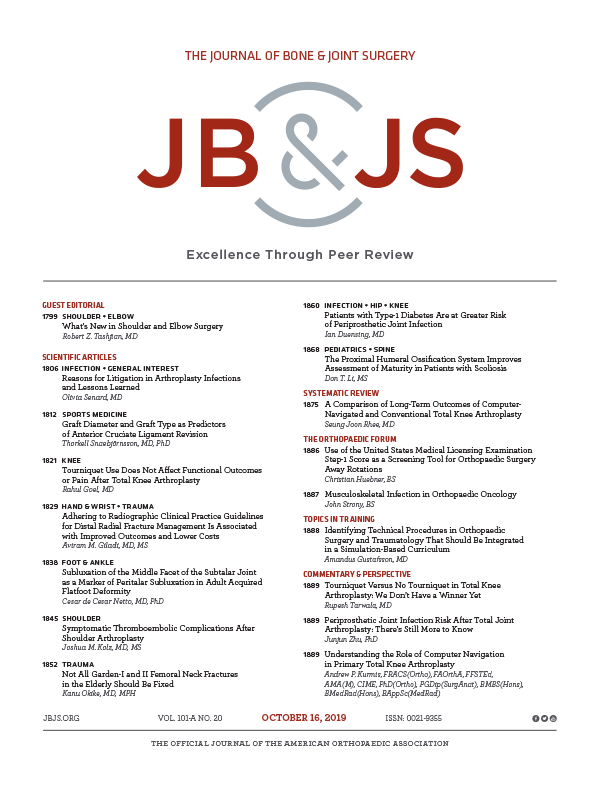
FARES method reduces acute anterior dislocations of the shoulder

FARES method reduces acute anterior dislocations of the shoulder
Reduction of acute anterior dislocations: A prospective randomized study comparing a new technique with the Hippocratic and Kocher methods
J Bone Joint Surg Am. 2009 Dec;91(12):2775-82.Synopsis
154 patients with acute anterior dislocation of the glenohumeral joint were randomized to receive either FARES (fast, reliable, safe) reduction, Hippocratic method reduction, or Kocher method reduction. This trial evaluated the efficacy of the FARES reduction method and compared it to the two common methods currently in use. The results from this trial indicated that the FARES method of glenohumeral joint reduction was significantly more efficacious, faster, and associated with less pain when compared to the Kocher and Hippocratic methods.
Was the allocation sequence adequately generated?
Was allocation adequately concealed?
Blinding Treatment Providers: Was knowledge of the allocated interventions adequately prevented?
Blinding Outcome Assessors: Was knowledge of the allocated interventions adequately prevented?
Blinding Patients: Was knowledge of the allocated interventions adequately prevented?
Was loss to follow-up (missing outcome data) infrequent?
Are reports of the study free of suggestion of selective outcome reporting?
Were outcomes objective, patient-important and assessed in a manner to limit bias (ie. duplicate assessors, Independent assessors)?
Was the sample size sufficiently large to assure a balance of prognosis and sufficiently large number of outcome events?
Was investigator expertise/experience with both treatment and control techniques likely the same (ie.were criteria for surgeon participation/expertise provided)?
Yes = 1
Uncertain = 0.5
Not Relevant = 0
No = 0
The Reporting Criteria Assessment evaluates the transparency with which authors report the methodological and trial characteristics of the trial within the publication. The assessment is divided into five categories which are presented below.
3/4
Randomization
3/4
Outcome Measurements
4/4
Inclusion / Exclusion
4/4
Therapy Description
3/4
Statistics
Detsky AS, Naylor CD, O'Rourke K, McGeer AJ, L'Abbé KA. J Clin Epidemiol. 1992;45:255-65
The Fragility Index is a tool that aids in the interpretation of significant findings, providing a measure of strength for a result. The Fragility Index represents the number of consecutive events that need to be added to a dichotomous outcome to make the finding no longer significant. A small number represents a weaker finding and a large number represents a stronger finding.
Why was this study needed now?
Anterior dislocations of the glenohumeral joint are common. Although several methods of reduction of anterior dislocations of the shoulder exist, few studies have compared efficacy, safety, and reliability of the different techniques. In this study, a new method of reduction of acute anterior shoulder dislocations was compared to the Hippocratic and Kocher methods.
What was the principal research question?
In patients with acute anterior dislocation of the glenohumeral joint, are FARES, Hippocratic, and Kocher reduction methods comparable in terms of efficacy and pain?
What were the important findings?
- Reduction was achieved for 88.7% (47) patients in the FARES group; 72.5% (37) patients in the Hippocratic method and for 68% (34) in Kocher group. Efficacy significantly favored the FARES technique (p=0.033)
- Reduction was significantly faster with the FARES method, as compared to the other two methods (FARES, time in minutes, 2.36 ± 1.24; Hippocratic, 5.55 ± 1.58; Kocher, 4.32 ± 2.12) (p<0.001)
- Pain was significantly milder when reduction was performed using the FARES technique (VAS scores: FARES, scale 0-9, 1.57 ± 1.43; Hippocratic, 4.88 ± 2.17; Kocher, 5.44 ± 1.92) (p<0.001)
What should I remember most?
The FARES method was found to be significantly more effective, faster, and less painful when compared to the Hippocratic and Kocher methods of reduction for anterior glenohumeral dislocation. Moreover, the technique was performed by only one physician and was applicable to anterior shoulder and simple fracture-dislocations.
How will this affect the care of my patients?
FARES method appears to be the optimal technique to reduce anterior dislocations of the glenohumeral joint in terms of efficiency and pain. Further trials should be conducted with larger sample sizes, which are accompanied with longer follow-ups to fully evaluate FARES method of reduction.
Learn about our AI Driven
High Impact Search Feature
Our AI driven High Impact metric calculates the impact an article will have by considering both the publishing journal and the content of the article itself. Built using the latest advances in natural language processing, OE High Impact predicts an article’s future number of citations better than impact factor alone.
Continue



 LOGIN
LOGIN

Join the Conversation
Please Login or Join to leave comments.